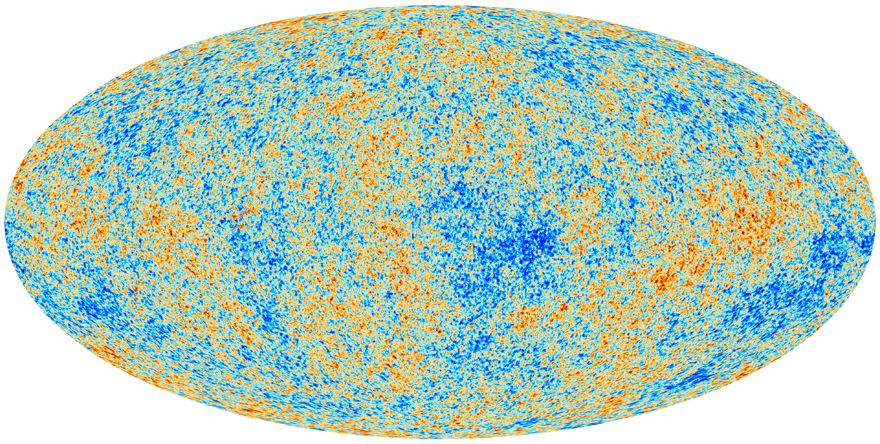The Planck Space Telescope receives its final commands

The Cosmic microwave background (CMB) as observed by Planck. The CMB is a snapshot of the oldest light in our Universe, imprinted on the sky when the Universe was just 380,000 years old. It shows tiny temperature fluctuations that correspond to regions of slightly different densities, representing the seeds of all future structure: the stars and galaxies of today. (Credit: European Space Agency and the Planck Collaboration)
October 23, 2013: The European Space Agency announced today that the Planck Space Telescope has been turned off after 4.5 years of successful operations.
Planck's unprecedented accuracy allowed it to pinpoint faint, minute patterns—differences in light and temperature that correspond to slightly different densities in the matter left over from the Big Bang. The telescope set out to conduct two whole surveys of the sky, but ended up completing five full-sky surveys with both its main science instruments, and eight full surveys with its Low Frequency Instrument.
Hundreds of Planck astronomers around the world, including Canadian cosmologists, will continue to study the final results of the mission, which will be released in 2014 and 2015. In March 2013, the Planck science team released a series of surprising results from the telescope, including refining the age of the Universe to 13.82 billion years old (100 million years older than earlier estimates), as well as a "cosmic recipe" for the Universe's composition: normal matter, the stuff of stars and galaxies like our own Milky Way, makes up just 4.9% of the Universe. Dark matter (an invisible substance that can only be inferred through the effects its gravity cause) accounts for 26.8%. Dark energy, a mysterious force that behaves the opposite way to gravity, pushing and expanding our Universe, makes up 68.3% of the Universe—slightly less than previously thought.
The Planck mission includes contributions from the Canadian Space Agency (CSA). The CSA funds two Canadian research teams that are part of the Planck science collaboration, and who helped develop both of Planck's complementary science instruments, the High Frequency Instrument (HFI) and the Low Frequency Instrument (LFI). Professors J. Richard Bond of the University of Toronto (Director of Cosmology and Gravity at the Canadian Institute for Advanced Research, and faculty member at the Canadian Institute for Theoretical Astrophysics (CITA)) and Douglas Scott, a professor at the University of British Columbia lead the Canadian Planck team, which includes members from the University of Alberta, Université Laval and McGill University as well as others at the Universities of Toronto and British Columbia.